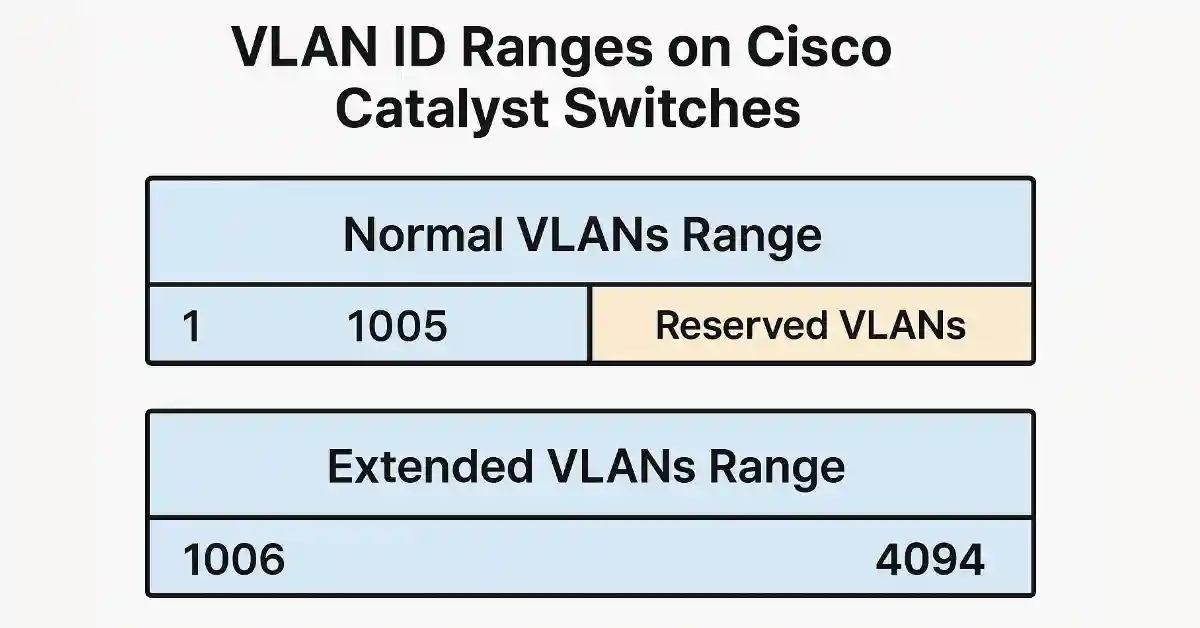Introduction to VLAN ID Range – Exclusive Explanation (Updated 2025)
Cisco Catalyst switches support a VLAN ID Range from 1 to 4094, divided into normal (1-1005) and extended (1006-4094) ranges. The normal range suits small to enterprise networks, with VLANs 1002-1005 reserved for Token Ring and FDDI, and cannot be removed. Extended ranges, stored in the running-config, support service providers but offer fewer features and...

